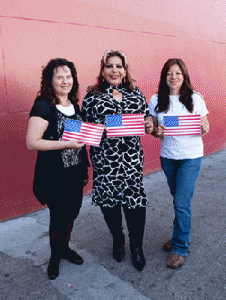
Courtesy of Mission Asset Fund
Access to citizenship is fundamentally about access to opportunity. Again and again, research indicates that naturalized immigrants—those who become citizens—experience important economic opportunities that non-citizen documented residents don’t, even accounting for a range of other variables that might differ between those who achieve citizenship and those who don’t. Naturalized immigrants earn up to 11 percent more money than their non-naturalized counterparts (Pastor, 2012). They qualify for more jobs—like many of the 21 million public sector positions that require citizenship—and also, frequently, for better ones, with higher wages, benefits, pensions, and long-term career possibilities.
These are meaningful opportunities that can lead to financial stability and mobility for entire families. Despite these advantages, there are currently 8.8 million legal permanent residents of the United States who are eligible for citizenship but have not obtained it, according to Cities for Citizenship, a national initiative to increase citizenship among eligible U.S. permanent residents and encourage cities across the country to invest in citizenship programs. Fifty-two percent of them are low income. While there are numerous reasons why an immigrant may not naturalize, often one of the most significant barriers is the cost.
In 2012, National Council of La Raza (NCLR)—where coauthor Janis Bowdler worked for ten years—commissioned a survey of more than 1,000 low- and moderate income Latino Californians. More than half of those surveyed that were eligible for citizenship identified unaffordability as a primary reason for declining to pursue naturalization. Recent research sponsored by the Center for American Progress and the National Partnership for New Americans confirms this finding.
The application fee for naturalizing is $680, which does not include additional costs applicants may incur, including legal assistance, fingerprinting and background checks, and English and citizenship preparation classes. It wasn’t always this expensive. A series of fee hikes increased the application cost a stunning 610 percent between 1998 and 2008. After the latest fee hike in 2007, applications for citizenship fell by nearly 50 percent, from 1.4 million to 526,000, begging the logical conclusion that many immigrants simply can’t afford the cost. Immigration advocates estimate that an average non-naturalized immigrant working full-time and earning the federal minimum wage would have to save eight weeks of full-time earnings to pay the application fee for a family of four. It’s an unrealistic expectation.
The federal government does offer fee waivers for eligible immigrants earning less than 150 percent of the poverty level. In much of the United States, however, immigrants earning more than 150 percent of the poverty level may very well still be part of the working poor who live paycheck to paycheck, and whose fragile financial footing can be toppled with a single unexpected expense. A single person in Chicago would need to earn less than $17,505 a year to qualify for a waiver under the current policy. Immigration advocates continue to call for increasing the eligibility guidelines to allow for more fee waivers, but there are no indications that such changes will occur, leaving citizenship—and its attendant opportunities— out of reach for many low-income aspiring Americans.
The cost of naturalizing is further complicated by the fact that many noncitizen immigrants don’t have any formal relationship with a banking institution and thus lack access to safe, low-cost credit. NCLR’s survey found that 34 percent of documented but non-naturalized immigrants were unbanked, as compared to 10 percent of naturalized survey participants.
In recent years, a handful of leaders from the immigration services and financial capability fields have come together—in some cases for the first time—to offer small loans or simple savings accounts designed specifically for citizenship applications. Similar efforts are underway to finance applications for DAPA, the Deferred Action for Parents of Americans and Lawful Permanent Residents, and DACA, the Deferred Action for Childhood Arrivals, two executive actions announced by President Obama that enable qualified immigrants to apply for work authorization and a stay from deportation for a defined number of years.
An example is Mission Asset Fund, a California-based nonprofit run by coauthor Jose Quinonez that administers Lending Circles for Citizenship, a program with roots in common practice across cultures throughout the world in which low-income people support one another by lending and borrowing money. MAF formalized lending circles to help immigrants save money to pay for naturalization fees. MAF operates as both a direct lender in California and also as a loan servicer to networks of nonprofit organizations throughout the country; it formalizes lending circle loans and reports activity to credit bureaus to help establish or improve participants’ credit histories.
NCLR is working with Self-Help Federal Credit Union and Emerge Financial Wellness, a Tennessee-based company that helps consumers achieve their financial goals, to develop a new loan product and technology that streamlines the application and decision-making of a loan for citizenship—and eventually for DACA and DAPA applications—to be available through NCLR affiliates across the country. Emerge Financial Wellness has developed a technology bridge that connects Self Help and NCLR affiliates by automating the application process to conform with the unique lending criteria of individual affiliates. Self-Help Federal Credit Union has customized a loan product and will manage the underwriting and servicing. This allows staff at NCLR affiliates to access the product from their desks, saving participants a trip to a branch and extending product availability to areas where no branch exists. NCLR is working with its affiliates to incorporate the loan into their existing programs, allowing them to reach target customers through their everyday services, where they are already likely to be seeking assistance. (JPMorgan Chase Foundation has supported the MAF and NCLR programs and others through grant and capital funding.)
Many other nonprofits, credit unions, banks, and mission-minded entrepreneurs are collaborating across the country to provide financing or savings to bring naturalization within reach of more people. Though some are successfully serving small numbers of clients, the majority of these efforts are still in their infancy. As a field we have little time to waste in scaling our efforts up, because demand is likely to increase significantly with the impending implementation of the expanded DACA and DAPA actions. As of today, the field is not ready to handle the anticipated volume, and this should be cause for concern for us all. If past experience is an indicator, we know that bad actors and fraudulent lenders will target our newest Americans with predatory products that could leave them in financial ruin just as they are getting started.
Although there has not been time for formal evaluation of the fledgling citizenship financing programs, our roles as funder and practitioner give us a bird’s-eye view of our collective progress and the challenges we face in increasing access to citizenship. In this spirit we have observed what seem to be some key elements of success:
• Embed the financial product in an established program that serves and educates the target population. Not only does this approach streamline delivery by meeting immigrants where they are, it also ensures that the product is offered in a supportive environment. For example, consider providing access to the product as part of a joint program with a legal aid provider who helps with the application, or embed it within a larger financial empowerment program that assists the client to develop good money management skills.
• Report the client’s payment history to the credit bureaus. Doing so will help the individual establish and build their credit history. While this may not be possible in all instances, there is a burgeoning movement among select states to enable nonprofit lenders to report to credit bureaus. Last year, California unanimously passed S.B. 896, which allows certain nonprofit organizations to provide critical financial products and services to low-income customers, including reporting payment histories to credit bureaus.
• Deliver the loan or savings product at the beginning of the application process whenever possible. The goal is to reach clients before they take out a high-interest loan or something else detrimental to their overall financial health. This product offering should also be accompanied by appropriate counseling.
• Partner with organizations with an established track record in serving immigrants and navigating the naturalization process. The process to naturalize may take many months or even years and can be a confusing journey for many. Having a partner that can help an individual navigate the system is not only helpful for achieving citizenship, but also critical to timing the product to the payment due date for the fee. This may seem less urgent in the case of a savings program, but best practice would also suggest that savings programs will be most successful when the goal is imminent.
• Leverage new technology to improve efficiency and broaden reach. Several financial providers, nonprofits, and their partners are thinking about how to automate underwriting, streamline delivery of loan decisions or payments, and embed products in mobile applications. Tech-enabled solutions are necessary to reduce costs and increase efficiency, allowing us to sustainably reach more individuals.
We know that some of this is easier said than done. Practitioners in this field are struggling with real barriers to expansion, including:
• Challenges inherent in small dollar loan programs. These programs are less profitable than larger loan products due to the high origination, underwriting, and servicing costs, and low profit margins. This makes it difficult for credit unions, community banks and other providers to commit the necessary resources to build such programs when volume is low, as it will be in the beginning. Nonetheless it is critical to build the infrastructure now so that the programs are in place once the demand increases, as it inevitably will.
• Lack of established, cross-sector relationships. Practitioners from the fields of financial capability and immigration have not worked together traditionally and thus need to start establishing partnerships now.
• Limited technology and trust. In some geographies—particularly rural areas and other isolated communities—there may be limited access to the types of technologies that can most effectively deliver these products and services. Similarly, providers may lack the client trust necessary to successfully administer these sorts of programs.
Citizenship finance enables two critical economic opportunities. Affordable and accessible financial products will, over time, help our newest Americans practice strong savings habits and build their credit history, which is a fundamental component of an individual’s financial identity. At the same time, citizenship itself will open the door to a range of meaningful opportunities to advance economically, such as access to better paying and more secure jobs. If we can do both of these pieces well, then we can set up these newest Americans to achieve economic success.
Doing so will require many more responsible providers in this space. Whether you are a practitioner in the field of financial capability, housing, asset building, immigrant services, or human services, and whether you work in the private, nonprofit, philanthropic or corporate sectors, there is a role for you. All of us can and should be involved in ensuring that new Americans have access to safe, affordable tools for financing citizenship and other opportunities for legal residency.

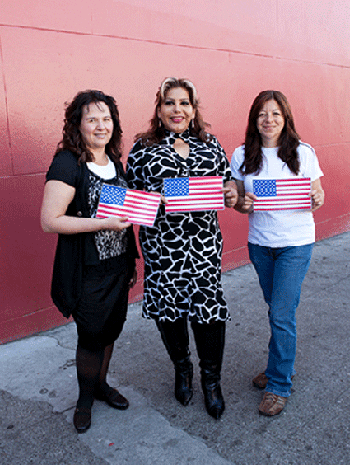

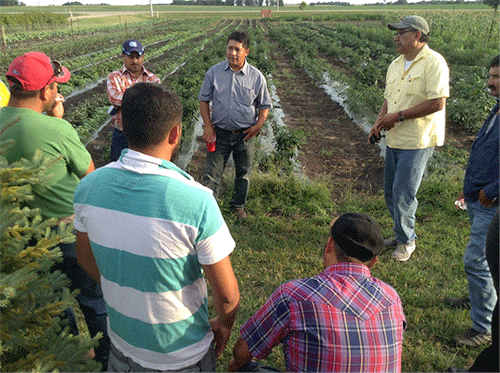
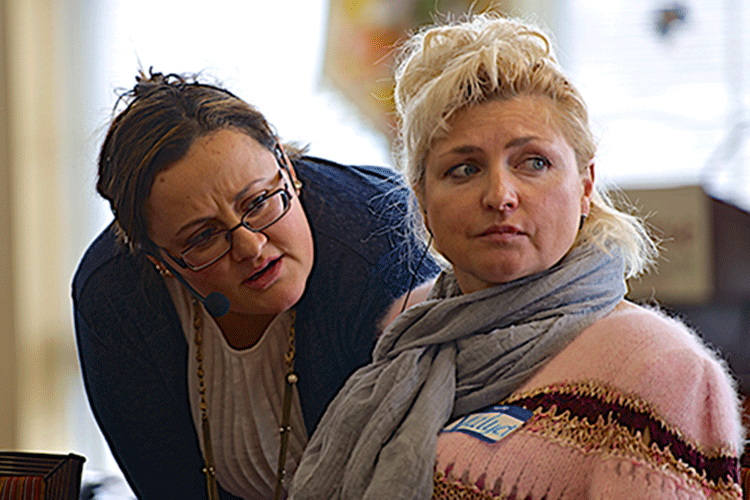
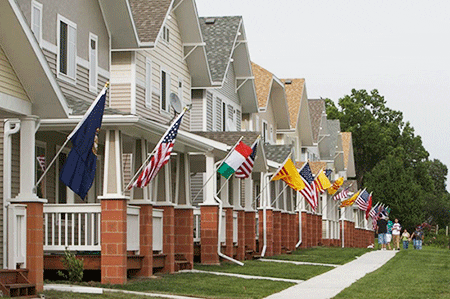
Comments